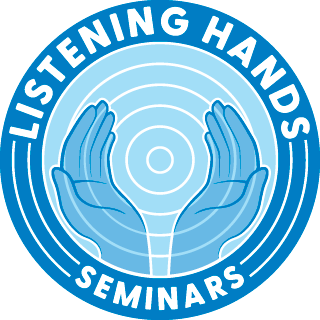We both took our first trainings in craniosacral therapy in 1993. These 3 day classes were valuable because we learned we could feel subtle motions in the cranium. They broadened our knowledge and opened up new possibilities about the body. The problem was trying to figure how to integrate craniosacral therapy into our Rolfing® practices. We either did Rolfing or a cranial session and we wondered, “how can this work be used in a whole body way?”
In 1996, we attended a lecture at the University of Vermont Medical School by Dr. James Jealous, DO, in which he talked about how the embryo's early formation is guided by fluid movements. He said these creative forces are still present in the adult and can be synchronized with to support healing. We literally got chills up our spines! There was something in the work he was describing that resonated deeply within us.
Dr. Jealous was practicing in a town nearby. Thomas contacted him to find out more about what he had said. He was very gracious in giving his time. We arranged several public presentations at which he agreed to speak. Unfortunately we also learned early in our conversations that he doesn't teach non osteopaths.
We both knew we were not about to go to osteopathic school due to our age, our successful Rolfing practices and family obligations, but Thomas began reading all that he could concerning osteopathy and cranial work. He then found out that former Rolfer, Michael Shea, was offering a class in biodynamic craniosacral therapy. We were very excited about this cranial training that was not a bio-mechanical model, like our first experiences. Michael wrote about many of the concepts that Dr. Jealous had spoken of. We immediately enrolled in the 10 week course. (michaelsheateaching.com)
That training introduced us to a whole new way of thinking about the body and healing. We recognized the value of working WITH and getting out of the way of, the inherent healing aspect of our clients. We were introduced to WHOLENESS as a palpable sensation and experienced the qualities of “normal” in the tissues.
We were given the beginning steps in learning how to shift within ourselves to be able to perceive the function of that creative mystery which "chilled our spines" when we first listened to Dr. Jealous speak. Even though we have around 1200 hours of training in biodynamic cranial sacral therapy and have assisted several trainings, we are Rolfers at heart.
Early on, we still could not see ways to easily integrate this new wealth of information into our practices. We could offer either a biodynamic session or a Rolfing® session. In the last 20 years Thomas particularly has studied, read and explored, in his own practice, how to integrate the skills we learned in our biodynamic training. We have shared and are grateful for our evenings of conversation together, sharing our continuing explorations and revelations as we practice this healing art each day. We bounce ideas off each other and report the amazing transformations we have experienced through changing the ways we approach our work. We talk about the latest tid-bits of information Thomas has gathered, our experiences perceiving the inherent healing aspect in our clients and the wonder of our work as we follow the Rolfing goals of enhancing the optimal functioning of the human being in our practices.
We have experienced many surprising and amazing changes in our clients’s bodies as we have practiced the subtle work we learned and have incorporated these skills more and more into our work. We continue our conversations about our experiences, but still Thomas was seeking a missing connection between bio-dynamic principals and the manual aspects of our work. Thomas has studied Dr. Sutherland’s learning progression and we have explored our own perceptions following Sutherland's descriptions of what he perceived. We were also shown extraordinary images of living fascia which abruptly changed many of our assumptions and beliefs about the tissues we think of as our primary focus as Rolfers. Through all this we began to realize what was missing was the fluid body. Missing was the bridge between the familiar sensations, density and contact skills we've long used interacting with the soma as Rolfers and the much more subtle communications and expressions of biodynamic movement.
We have continued to explore and practice the self awareness and processes required to interact with the body's fluid system and it’s Inherent self ordering abilities. We have practiced presence, patience and listening with our hands, integrating these perspectives into our Rolfing sessions for many years now. We have experienced profound and at times seemingly miraculous results. Given our personal experiences and successes we have chosen to share these ways of working so more of our colleagues can explore a broader range of skills in interacting with their clients. It seems we can get more done, with less effort (Thomas' hands never hurt and Gale's are healing from overwork) and our clients are very comfortable with our work.
Our intent is to offer what we've learned and explored over several decades in a way which does not diminish the value of our Rolfing viewpoint, but augments our work through exploring the essence of this biodynamic, whole body approach simplifying it for all manual therapists. We only teach from our experience of what has worked and want to provide the underlying principles and concepts of biodynamics and guide students to explore and add these skills into their own practices.

